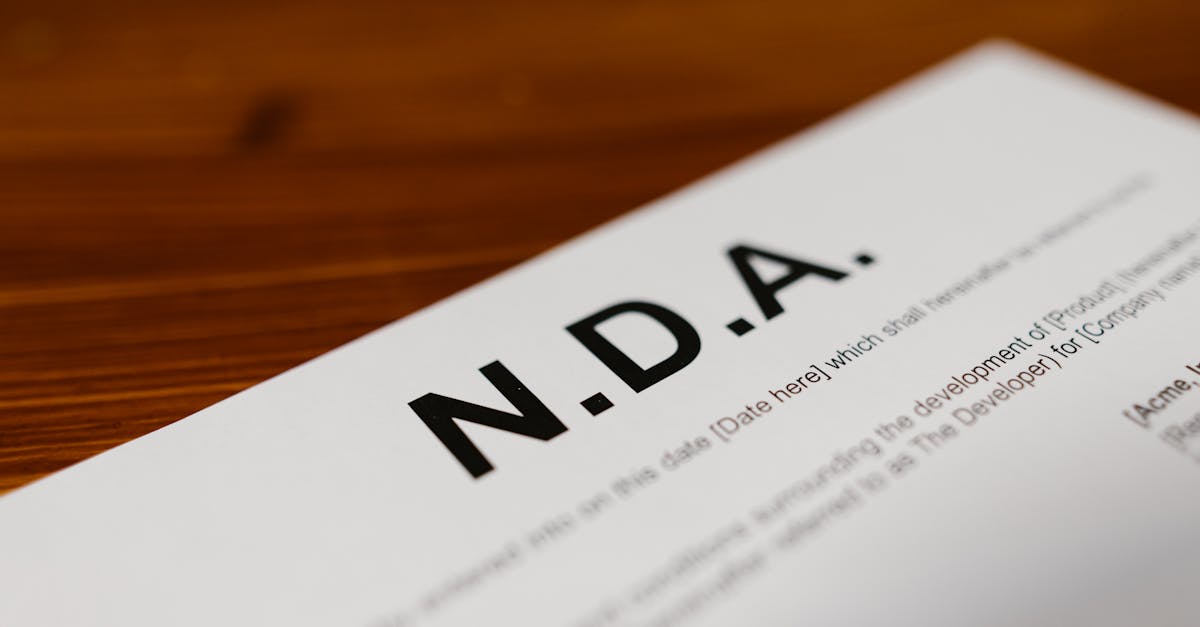
Introduction
Non‑competes are collapsing into a legal minefield. As states and regulators tighten the rules, a one‑size‑fits‑all clause can derail hiring, spark litigation, and expose you to costly compliance gaps — especially for startups and multistate employers. HR and legal teams now must balance enforceable protections like confidentiality and trade‑secret clauses against increasingly restricted non‑competes, and get those choices right in every employment agreement.
Document automation and state‑aware templates change this from a manual guessing game into a reliable, auditable process: detect jurisdiction, toggle or replace risky clauses, flag high‑risk cases for counsel, and keep templates updated as law changes. Below we walk through what to track by state, how to draft enforceable confidentiality and fallback clauses, and how to design workflows and monitoring to keep your contracts compliant and defensible.
Why non‑competes are increasingly restricted and what HR needs to know by state
Trend overview. Over the last decade U.S. states and regulators have narrowed the permissible scope of non‑compete agreements. Several states (notably California, North Dakota and Oklahoma) largely prohibit employee non‑compete clauses, while others limit them by salary, role, or public interest. Federal scrutiny and legislation proposals have increased focus on protecting worker mobility, especially for low‑wage employees.
What HR should track by state.
- Absolute bans: In some states a non‑compete agreement is unenforceable for nearly all employees.
- Salary or role thresholds: Other states allow non‑competes only for highly compensated executives or in sale‑of‑business contexts.
- Blue‑pencil and reasonableness rules: Courts may rewrite or limit overbroad clauses; some require narrow temporal/geographic scope and legitimate business interest.
- Notice and consideration: Some jurisdictions require specific consideration (e.g., a bonus or promotion) or written notice at hire vs. post‑hire.
Practical HR actions.
- Classify positions by jurisdiction before issuing an employment agreement or employee contract.
- Replace broad non‑compete agreement clauses with alternatives where state law prohibits enforceability (see garden‑leave, non‑solicit below) or use state‑specific templates like this non‑compete flow: non‑compete agreements template.
- Maintain a central, versioned library of employee agreements and communicate changes to managers and legal counsel.
Special note for startups and multi‑state employers. Startups often rely on uniform employee agreements for speed. That creates legal risk: consider rolling out state‑aware variants (employee agreements for startups) and ensure new hires in restrictive jurisdictions get compliant language.
Confidentiality vs non‑compete: drafting enforceable, compliant protections
Different purposes. A confidentiality agreement employee (often part of an employment contract) protects trade secrets and sensitive data. A non‑compete agreement restricts future work. Because courts scrutinize restraints on trade, confidentiality protections are generally easier to enforce than broad non‑competes.
Key drafting principles
- Narrowly define protected information: limit to trade secrets and legitimately confidential business information rather than broad categories like “any business information.”
- Limit duration and scope: time‑bound confidentiality obligations and narrowly tailored non‑competes (if allowed) improve enforceability.
- Link to legitimate interest: show why the clause protects client relationships, trade secrets, or significant proprietary investments.
- Include severability and mitigation: employer should ask courts to reform overbroad clauses rather than void them entirely.
- Consider injunctive relief: specify employer remedies for breach of confidentiality in the employment agreement to enable rapid court intervention when trade secrets are at risk.
Practical clauses to include in an employee contract.
- Clear definitions (“Confidential Information,” “Trade Secrets”).
- Permitted disclosures (e.g., required by law).
- Return of materials and access revocation on termination.
- Non‑solicit of clients and employees as a narrower alternative to a non‑compete.
- Choice of law and forum clauses aligned with enforceability—be cautious where local law restricts non‑competes.
Interaction with employment agreement documents. Integrate confidentiality provisions into the main employment contract or reference a stand‑alone confidentiality agreement, and coordinate with any separate non‑compete. For California hires, use state‑specific templates like: employment agreement — California law.
Designing state‑aware templates that toggle or replace clauses automatically
Why templates must be state‑aware. A one‑size‑fits‑all employee agreements template will expose the company to enforceability risk. State‑aware templates ensure each hire gets the correct mix of clauses—permanent, fixed‑term, or contractor—based on location and role.
Design considerations
- Jurisdiction detection: use the employee’s work location (state law) as the primary driver for clause selection.
- Role and compensation rules: add logic to toggle non‑competes only for executive or high‑salary roles where permitted.
- Clause alternatives: automatically replace prohibited non‑competes with enforceable measures (non‑solicit, garden‑leave, trade‑secret clauses).
- Template variants: maintain distinct templates: permanent employment agreement, fixed‑term contract, contractor agreement—each with state toggles.
Implementation tips.
- Model templates as modular clauses so the system can insert or remove sections without breaking references.
- Provide an “explainability” note in the document footer summarizing why clauses were included or removed (audit trail for compliance).
- Keep a searchable library: employee agreements sample and employee agreements australia variants if you operate internationally.
Practical link and sample approach. If you use prebuilt forms, direct users to state‑specific resources and templates (for example, a non‑compete flow at non‑compete agreement) and the California employment agreement reference above.
Automation workflows: route, flag and counsel review when high‑risk clauses are used
Why automate review. Automation reduces the risk that an impermissible clause is issued and speeds approvals for high‑value hires. A clear workflow ensures HR, managers and legal counsel see the right documents at the right time.
Workflow components
- Pre‑build validation: the template engine validates jurisdiction, role, and salary against rules before generating the document.
- Automated flags and triggers: mark agreements containing non‑compete, long‑duration confidentiality, or multi‑state restriction clauses as “high‑risk.”
- Routing rules: auto‑route high‑risk cases to internal counsel or external counsel with contextual data (role description, compensation, prior relationship with company).
- Approval gates: require legal sign‑off before repository publishing or candidate delivery for flagged documents.
Sample triggers to flag for counsel
- Non‑compete clause applied to a hire in a broadly prohibitive state.
- Non‑compete or non‑solicit with duration > 12 months.
- Executives, R&D roles, or employees with access to core trade secrets.
- Cross‑border remote hires that implicate multiple jurisdictions (employee agreements vs employment contracts issues).
Recordkeeping and evidence. Maintain audit logs of who generated/approved each employment agreement and the rationale. Store signed acknowledgements and maintain an onboarding documents checklist for compliance audits.
Template examples and fallbacks (garden‑leave, non‑solicit, trade secret protections)
When to use fallbacks. If a non‑compete is unenforceable or high‑risk, select narrower protections that meet the business need while improving enforceability.
Fallback options
- Garden‑leave: pay a portion of salary during the restricted period. Useful for executives where compensation makes the restriction reasonable.
- Non‑solicit: prohibit soliciting clients or employees rather than working in the same industry; often more enforceable than broad non‑competes.
- Trade secret & confidentiality protections: tightly drafted confidentiality clauses and strong data access controls protect core IP without restricting employment options.
Example considerations for drafting each fallback.
- Garden‑leave: spell out compensation rate, duration, and duties during leave.
- Non‑solicit: define “solicit” and carve out passive recruitment or responses to public job postings.
- Trade secret protections: include definitions, return of materials, and specific injunctive remedies.
Template resources. Keep ready‑to‑use clause modules in your employee agreements template library and include short sample language for HR to insert. Maintain examples for different contexts (permanent hires, fixed‑term, contractor) and jurisdictions; for non‑compete specific flow see: non‑compete agreement.
Monitoring changes in law and automatically updating templates and acknowledgements
Continuous monitoring is essential. Employment law and enforceability rules change frequently. HR needs a process to capture legislative changes, court decisions and regulator guidance and feed them into the template engine.
Recommended monitoring setup
- Subscribe to jurisdictional legal updates and regulatory feeds for the states and countries where you hire (include Australia if applicable — employee agreements australia).
- Maintain a rules engine that maps legal changes to template actions (disable clause, change duration, add notice language).
- Version control and automated testing: when templates update, run a sample generation against representative roles and jurisdictions to ensure expected toggles.
Employee notifications and re‑acknowledgement. When you materially change core employment terms, determine whether existing employees must re‑sign or receive acknowledgements. Automate notification workflows and keep a log of re‑signed agreements for compliance and audits.
Governance and escalation. Define SLAs for legal review of flagged changes, and run periodic audits comparing active employment contracts to the current template set. Maintain an onboarding documents checklist and educate managers about employee agreements vs employment contracts to avoid informal modifications that create risk.
Summary
Bottom line: As non‑compete rules tighten, the safest path is to favor narrowly drafted confidentiality, non‑solicit and garden‑leave fallbacks and to make those choices automatically based on location, role and compensation. State‑aware templates and document automation let HR and legal teams detect jurisdiction, toggle or replace risky clauses, flag high‑risk hires for counsel, and retain an auditable version history — reducing hiring delays and litigation exposure. The result is consistent, defensible employee agreements across jurisdictions and faster, safer onboarding. Get started with state‑aware templates and workflow automation at https://formtify.app.
FAQs
What is an employee agreement?
An employee agreement is a written contract that sets out the basic terms between an employer and an employee, including duties, compensation, and key obligations like confidentiality. It documents expectations and legal protections so both sides understand their rights and responsibilities.
Do I need an employee agreement?
Most employers benefit from having a written employee agreement to avoid ambiguity and protect trade secrets or client relationships. For multistate or remote hires, using state‑aware templates ensures the agreement remains enforceable and reduces compliance risk.
What should be included in an employee agreement?
Include core elements such as job duties, pay and benefits, termination terms, and clear confidentiality/trade‑secret protections. Where appropriate and allowed by law, add narrowly tailored non‑solicit or garden‑leave fallbacks and a choice‑of‑law clause aligned with enforceability concerns.
Can an employer change an employee agreement?
It depends on the contract language and local law: some terms can be changed with mutual consent, while unilateral changes may be restricted or require notice and consideration. Best practice is to document any material change, obtain employee acknowledgement, and involve legal counsel for high‑risk modifications.
How long is an employee agreement valid?
Duration varies: the agreement governs the employment relationship while in effect, confidentiality obligations often survive termination, and restrictive clauses (like non‑competes) are limited by state law. Use state‑aware templates and automation to enforce appropriate durations and avoid overbroad timeframes.





